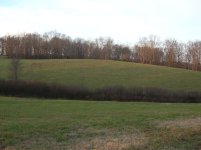bugstruck
Platinum Member
This roll over talk got me to thinking about something. Your gonna think I'm nuts. /forums/images/graemlins/crazy.gif /forums/images/graemlins/crazy.gif Some may not like the way I used others equipment. Come to think of it it was just plain stupid. Anyway here it is... Used to play golf may years ago and many of the golf courses had the tricycle golf carts. For perspective I was in my late teens (all grown up of course). I used to scare the snot out of my golf partners by chauffeuring them on an outside turning slope and cutting the wheels uphill to raise the uphill back wheel (inciting a roll). Once you initiated that you could straighten the wheels and it might sit back down or bounce along on the high side tire very precariously. The solution, to arrest the roll, was to turn the front wheel downhill and accelerate all at the same time. It always sat down quickly and solidly. Mind you I only did this stunt about 6 or 7 times so this isn't something tested.
Obviously a 6,000 # tractor and a 600 # golfcart on 3 wheels are worlds apart. Dropping into a hole would change the dynamics at work too. But with all this talk about roll over and the plain seriousness of that situtation, I thought I'd through it out there. I do know what I'll do if a high side wheel ever lifts on my tractor (God forbid), and I have the room to maneuver, I'm doing just what I did on that trike. Unless someone here can convince me otherwise.
Surely this will get some comments. /forums/images/graemlins/smile.gif
Obviously a 6,000 # tractor and a 600 # golfcart on 3 wheels are worlds apart. Dropping into a hole would change the dynamics at work too. But with all this talk about roll over and the plain seriousness of that situtation, I thought I'd through it out there. I do know what I'll do if a high side wheel ever lifts on my tractor (God forbid), and I have the room to maneuver, I'm doing just what I did on that trike. Unless someone here can convince me otherwise.
Surely this will get some comments. /forums/images/graemlins/smile.gif
